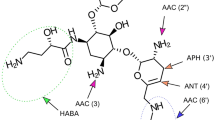Summary
Flomoxef is a fourth generation cephem which has the same activity against gram-negative bacteria as the third generation cephems, but is also active against gram-positive organisms, expecially most methicillin resistantStaphylococcus aureus (MRSA). As flomoxef induces the smallest amount of PBP-2' among all cephems, it is hoped that this will be the cephem that is able to control the increase of MRSA. High plasma levels in proportion to dosage are seen with flomoxef, the transfer to various body fluids and tissue is good, and the half-life in the plasma is about 50 min. Most of the compound is excreted in the urine in the unchanged form, that is 85% in 6 h. Clinical trials in 2,494 cases with various infections showed an excellent to good response in 77.1%, and an antibacterial effect of 80 to 100%. The efficacy rate against MRSA was 83.3%. The type and incidence of side effects was common to those of other injectable cephems, and no spermatogenic or hematological side effects were observed.
Zusammenfassung
Flomoxef, ein Cephem der vierten Generation hat eine mit den Cephemen der dritten Generation vergleichbare Aktivität gegen gramnegative Erreger, darüber hinaus aber eine Wirkung gegen grampositive Erreger, die die meisten methicillinresistenten Stämme vonStaphylococcus aureus einschließt. Von allen Cephemen hat Flomoxef am wenigsten die Eigenschaft, PBP-2' zu induzieren; daher besteht die Hoffnung, daß dieses Cephem fähig ist, die Zunahme methicillinresistenterS. aureus-Stämme unter Kontrolle zu halten. Mit Flomoxef werden im Verhältnis zur Dosierung hohe Plasmaspiegel beobachtet, die Substanz gelangt gut in verschiedene Körperflüssigkeiten und in Gewebe; die Plasmahalbwertzeit beträgt etwa 50 Minuten. Der größte Anteil der verabreichten Substanzmenge wird unverändert mit dem Urin ausgeschieden, das heißt 85% in 6 h. In klinischen Studien an 2494 Patienten mit verschiedenen Infektionen wurden in 77,1% der Fälle sehr gute bis gute klinische Ergebnisse beobachtet; eine antibakterielle Wirkung war bei 80 bis 100% der Fälle nachzuweisen. Bei methicillinresistentenS. aureus-Stämmen lag die Erfolgsrate bei 83,3%. Nebenwirkungen waren nach Art und Häufigkeit mit denen anderer injizierbarer Cepheme vergleichbar, eine Beeinträchtigung der Spermatogenese oder hämatologische Nebenwirkungen wurden nicht beobachtet.
Similar content being viewed by others
Author information
Authors and Affiliations
Rights and permissions
About this article
Cite this article
Ito, M., Ishigami, T. The meaning of the development of flomoxef and clinical experience in Japan. Infection 19 (Suppl 5), S253–S257 (1991). https://doi.org/10.1007/BF01645536
Issue Date:
DOI: https://doi.org/10.1007/BF01645536





